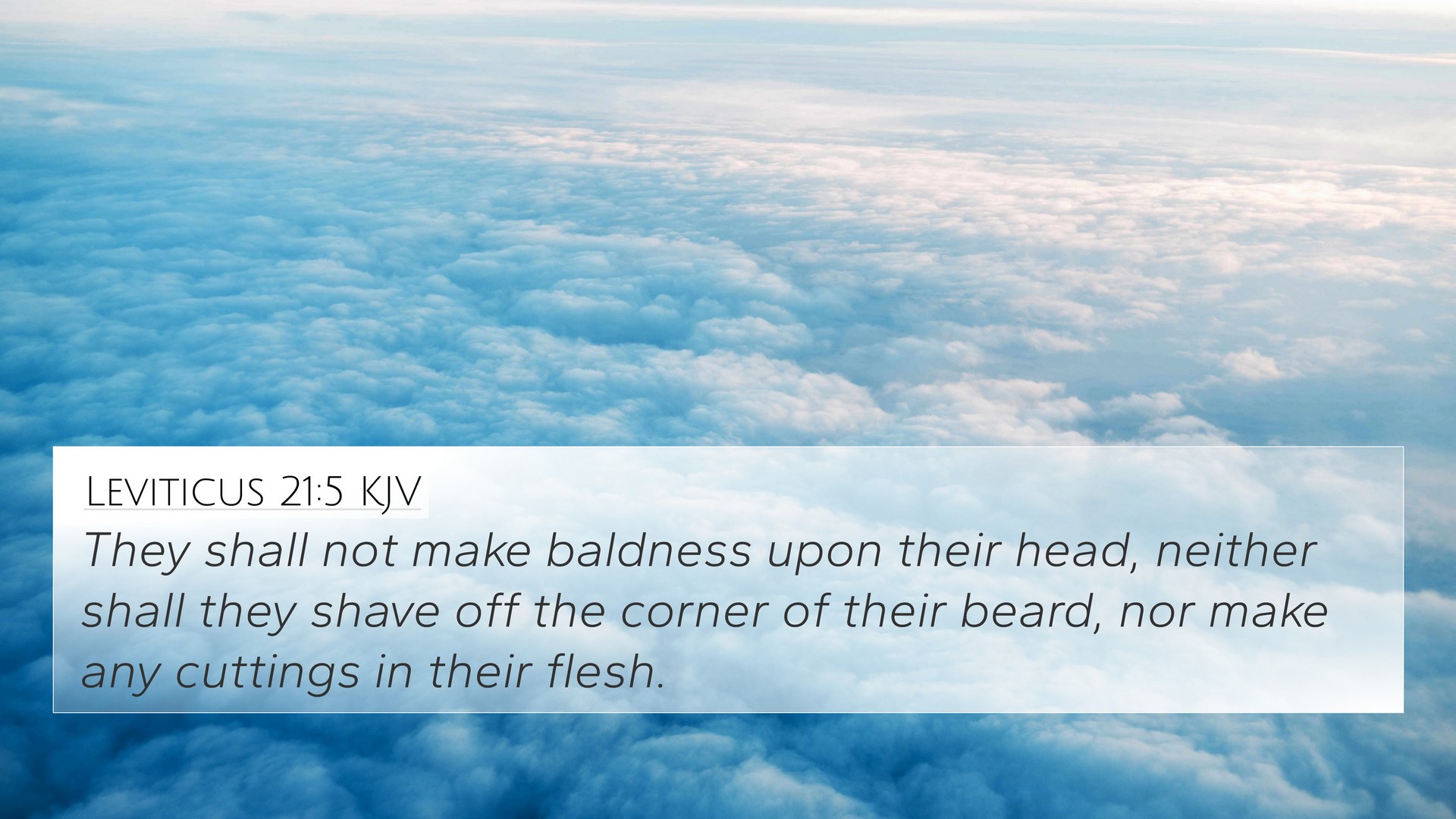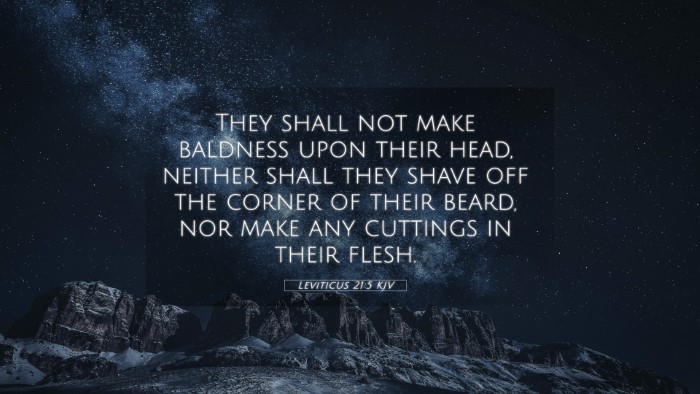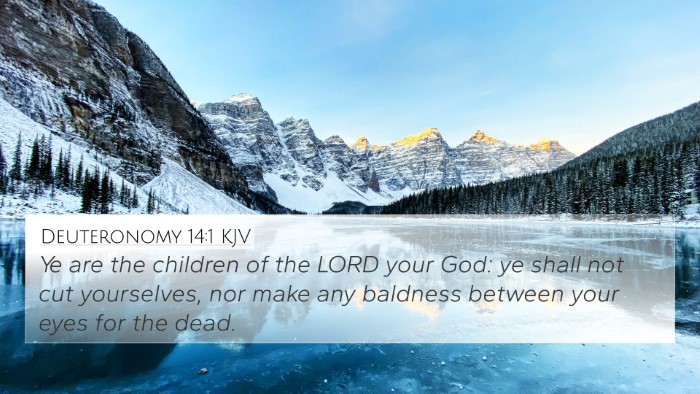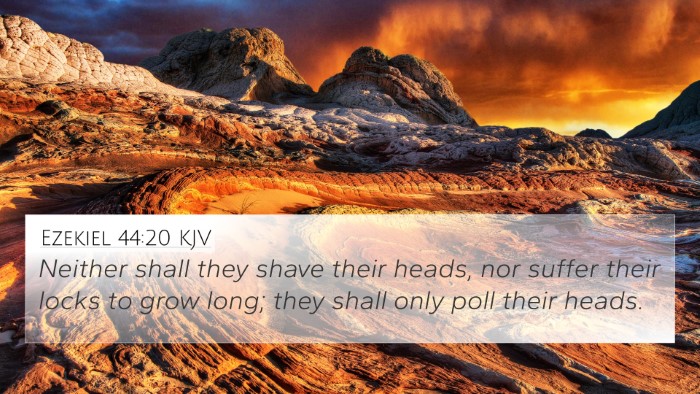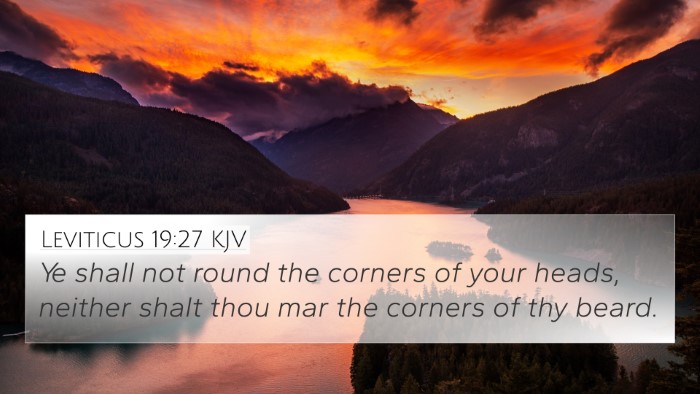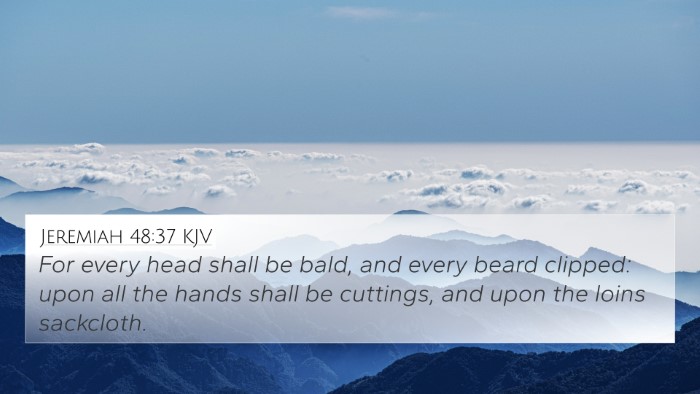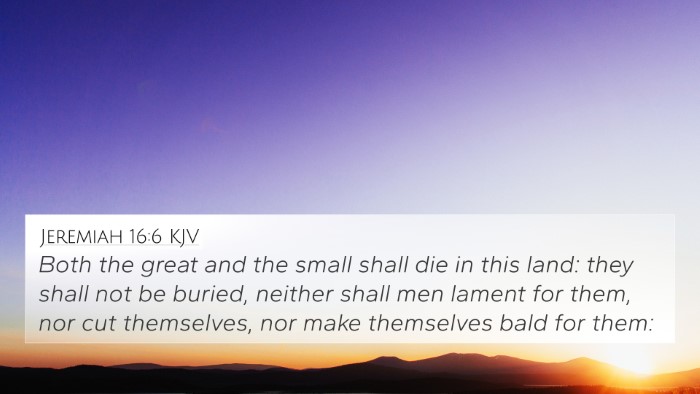Understanding Leviticus 21:5
Verse Citation: Leviticus 21:5
Bible Verse: "They shall not make baldness upon their head, neither shall they shave off the corner of their beard, nor make any cuttings in their flesh."
Summary and Meaning
In Leviticus 21:5, God gives specific instructions regarding the conduct of the priests, emphasizing their unique role and holiness. This verse highlights the principles of respect and separation, urging priests to maintain a distinctive appearance and to engage in religious practices that reflect their sacred duties.
Commentary Insights
-
Matthew Henry:
Henry explains that these regulations were intended to make clear distinctions between the priests and the people. The priests were to uphold a certain standard and express their holiness through their appearance. These outward signs were meant to discourage worldly practices associated with mourning or pagan rituals.
-
Albert Barnes:
Barnes notes that the practices mentioned in this verse symbolized mourning and grieving. By prohibiting these actions, God instructed the priests to maintain their focus on their religious duties without being consumed by personal sorrow or worldly influences.
-
Adam Clarke:
Clarke elaborates on the cultural significance of these practices, emphasizing that the prohibition against cutting the hair or beards was designed to set apart the priests and maintain their dignity. Their appearance was to be a reflection of their holiness and commitment to serving God.
Cross-References and Connections
This verse has numerous connections to other scriptures that emphasize the theme of holiness, separation, and the conduct expected of those in positions of spiritual leadership:
- Leviticus 10:6: Addresses the clothing of the priests and their sacred appearance.
- Exodus 28:4-43: Details the garments of the priests, emphasizing their unique role.
- Deuteronomy 14:1: Prohibits mourning practices, linking to priests' conduct.
- 1 Peter 2:9: Affirms believers as a royal priesthood, suggesting a parallel in sacred living.
- Ezekiel 44:20: Outlines regulations for priests, reiterating standards for appearance and conduct.
- Isaiah 57:21: Highlights God's desire for a holy people, connecting to the overall theme of separation.
- Matthew 23:28: Jesus speaks to outward appearances, drawing parallels between true piety and hypocrisy.
Conclusion
Leviticus 21:5 serves as a reminder of the sacredness expected of priests and by extension all believers. The principles drawn from this verse resonate throughout scripture, illustrating the continual call to holiness and the importance of distinguishing oneself from worldly practices.
Tools for Further Study
- Utilize a Bible concordance to find cross-references efficiently.
- Consult a Bible cross-reference guide for deeper exploration of themes.
- Engage in cross-reference Bible study to identify and examine related verses.
- Employ a comprehensive Bible cross-reference system to enrich your understanding.
Recommended Study Approaches
Consider methods such as:
- Cross-referencing Bible study methods: Identify links between Old and New Testament teachings.
- Comparative study of Pauline epistles: Explore connections to major themes of holiness.
- Interpreting Biblical themes through cross-references: Look for parallels within scripture.
